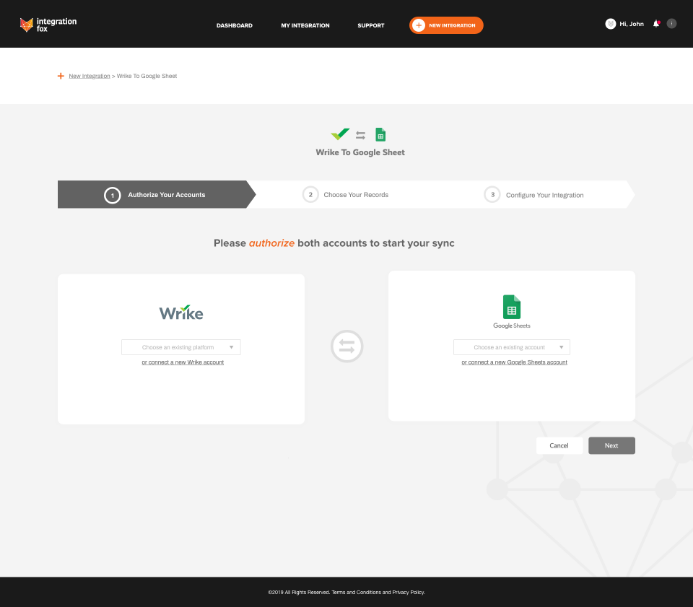More than ever before, dirty data is being produced at a rapid rate the world over. But what exactly is this data and more importantly, do you have it?
In its simplest terms dirty data is data that is unusable by a business, whether it is incomplete, inaccurate, or unorganised or unverified. When this data is used by businesses to inform their insights, it can significantly affect the overall performance of the company and may be catastrophic if used incorrectly. It is crucial that this data is checked and cleaned periodically, especially if we are transferring data from one system to another.
Skip to a section:
- 4 Common Problems of Bad Data
- How Bad Data Has Changed The Course of History
- Why Is Bad Data So Expensive?
- How to Keep Your Database Clean
- Where Integration Fox Fits In
4 Common Problems of Bad Data
Whether we'd like to admit or not, every business has bad data - they just might not know it yet. We've compiled a list of common problems with bad data as well as actionable solutions for how you can get onto cleaning them up. 
1. Incomplete Data:
If you've ever run a marketing campaign, you might have come across contacts that were lacking in critical fields, including "Business Name," "Sector," "Industry," etc. If these fields are skipped over for the sake of importing contact lists quickly, you can can also lose out on being able to hone in on these target audiences using smart lists. It can mean the difference between hitting valuable revenue opportunities or missing the mark altogether.
Why is it a problem?
The more information you have on a contact, the greater the potential to find more valuable insights on your customer base. Therein lies the problem: for a data insight to be useable, all the records must be complete in order to ensure that those insights are accurate and commercially useable. Data processes like lead routing, scoring and segmentation heavily rely on a variety of key fields in order to understand who your customers are, and how you can better target them. If your data is incomplete, this will make any marketing activities your business tries to do difficult: perhaps more concerning, business actions could be occurring off entirely inaccurate insights.
How to diagnose/manage
Consistency and process are key to managing and maintaining records. ensuring your records are filled a certain way with a set convention can go a long way to ensuring uniformity of data and therefore increase its usability.

2. Old Data
Have you ever combed through reports looking for useful information to guide you on a project, only to discover that it was too old, out of date, and probably irrelevant? We sure have and it can be a real pain.
Why is it a problem?
With modern ecosystems and digital automation systems constantly changing, it can be very difficult for an average database to keep up. Every business needs to ensure that the data it is accessing is fresh, relevant and timely to what they need so that any insights, decision-making and analytics is being informed by the most accurate and up-to-date information available. The problem is that as time goes on, this old data begins to pile up without you even realising.
How to clean it
A great way to clean your old data is to run a data cleansing campaign, i.e. sending regular emails to your database to confirm their contact details, as well as creating tasks to remove bounces and non-responses. This will allow you to keep your database up to date and accurate.
3. Unverified Data: Privacy/Consent Concerns
Digital consent, opt-ins, and privacy notifications are becoming the new norm as society shapes its laws to protecting the rights of its citizens. In recent years, the following major data privacy and consent laws have included:
- GDPR in the EU
- California's Consumer Privacy Act (CCPA)
- Maine's Act to Protect the Privacy of Online Consumer Information
Beyond the ethical concerns raised, non-compliance is increasingly a criminal concern: if you're not playing by the rules you can end up in hot water. Consider the data records of people subscribed to a mailing or marketing list: it is crucial that these records are updated and maintained accurately to prevent a lapse in compliance, leading to a criminal charge.
How to clean it & stay within data privacy regulations
- Delete outdated and unusable records from your marketing automation system
- Merge duplicates to prevent fragmented profiles
- Automate lead-to-account linking
- Consolidate your stack as much as possible
Once you've got a clean database, complying with data privacy regulations is easy and removes the hassle of worrying if you're in breach of privacy laws.

4. Incomplete Data
5. Inaccurate & Incorrect Data
When it comes to collecting and compiling data about your customers, you want to gain a better understanding of them to inform strategic business decisions. In short, you want to be confident that the data you are collecting is actually relevant and accurate, and not leading you off on a wild goose chase.
Why is it a problem?
Approximately 69% of Fortune 500 companies say inaccurate data undermines their efforts. It's key to extract data from accurate information, be able to glean valuable insights and make smart data-driven decisions based on the most accurate information possible.
So, what exactly is the difference between these two types of bad data?
Incorrect data: Data that is stored in an incorrect location, such as a text field that has numerical values attached
Inaccurate data: A field is filled out but it is not correct, such as a fake email address
How to clean it
Keep track of all data entry points and find out where the inaccurate data is coming from. Once you can identify this, you can use external solutions to maintain accuracy as well as use a data tool to ascertain more accurate information.
6. Inconsistent Data
Just like when you create duplicate records of contacts, inconsistent data happens when the data looks different but represents the same thing.
Why is it a problem?
Let's take a fictional persona in your database who's job title is Vice President. If you've recorded this contact's job title differently across a number of places and typed them in as "VP," "v.p,' "VP," "Vice Pres" and so on, the system will record these as a different piece of information each time. It's annoying and doesn't do much good towards analytics and makes segmenting contacts increasingly difficult.
Another common example of this is date formatting. Americans write it one way, Europeans another - and if you don't know the history of the data, you can't know for sure which one is the accurate of the two. You need to know where your data is coming from and be sure that it was created by people who are both from the same continent (or at least have a clear indication of where the author is from).
How to clean it
What you need to do is to standardise your data, and by this we mean that you need to start making proper naming conventions going forward. Integrating a data management tool can help you standardise your data (no matter where the source is being pulled from) and enable it to be processed, analysed and leveraged across each department within an organisation, enabling a successful data sharing strategy and increased accessibility throughout your organisation.

7. Too Much Data
Believe it or not, you can have too much of a good thing - and that includes data!
Why is it a problem?
If you hoard data, you're going to encounter:
- Slower data exchanges
- Inflated record counts
- Failure to stay within storage compliance limits
How to clean it
In order to reduce the load of having too much data on your hands, you need to trim the fat from your database. Fortunately, there are ways to mass delete unnecessary and old records of data (especially if it is no longer usable or relevant).
How Bad Data Has Changed The Course of History
We've discussed some key points about how bad data can be identified and cleaned, but you might be wondering what this actually looks like in a real-world scenario? Throughout history, there have been many events influenced by bad data, right from the days of the Roman Empire to a NASA Mars Orbiter in the late 90s. Here are just a few of these incredible moments in history when bad data was responsible for a huge ripple effect that was felt the world over.
1. Revelation of the Pentagon Papers (1971)
In 1971, America's war in Vietnam was escalating and a large percentage of the country still supported the war effort. The catalyst for shifting public opinion came about when the Pentagon Papers were leaked to the New York Times, exposing the bombshell revelation that most of the data that the US government was releasing about the conflict was in fact, false. Once this smokescreen of bad data was revealed, support for the war took a nose dive.

2. Mars Orbiter (1999)
A NASA space probe launched in 1998, the Mars Climate Orbiter was expected to generate major scientific breakthroughs about the red planet and bring back valuable information to Earth. The problem was that the Orbiter never ended up performing a single test. Why? Because it flew off track and disintegrated in the atmosphere of Mars because the software programmed into it was not converting data to the metric system. It was, in hindsight, a relatively juvenile error, but it was a costly mistake for NASA totalling a whopping $193 million.

3. World Financial Crisis (2008)
One of the worst financial disasters in history, the 2008 crash was created by bad data that incorrectly overstated how much mortgage-backed securities, collateralised debt obligations, and other derivates were actually worth. When the subprime mortgages that made up these derivates defaulted and their true value become known, huge financial institutions (including the Lehman Brothers) went bankrupt. This fiscal collapse led to widespread evictions, foreclosures and job losses the world over.

Why Is Bad Data So Expensive?
According to IBM, bad data costs the US economy roughly $3.1 trillion dollars each year. If that wasn't enough, the study also found that 1 in 3 business leaders don't trust the information they use to make decisions. This is pretty alarming - so not only do these leaders have little confidence in the data they are using to inform what they do, there is a high level of uncertainty into whether or not the data is actually accurate. This same study tells us that approximately 27% of business leaders were unsure of how much of the data they use is accurate.
In a separate study from Experian Data, it was shown that bad data has a direct impact on the bottom line of nearly 90% of all American companies. Similarly, many of these organisations believed (on average) that 32% of their data is inaccurate, and that the average loss from bad data accounted for 12% of the company's overall revenue.
All of this points to the issue that most companies view their data as being flawed, inaccurate, incomplete or duplicated. With all of this considered, the research from these studies indicates that poor quality data leads to high costs, high customer turnover rate and excessive expenses.
How To Keep Your Database Clean
Most of the time, bad data is simply being sourced from the wrong places. Here are 3 key tips for how you can prevent it from accumulating in your business:
- Go Straight To The Source
Discover what the end goal of your data is meant to be. Then, determine whether or not your data sources are accurate and giving you the information that you need. - Refine Your Process
If your data source is correct, your extraction techniques are correct and you're pretty sure you are too, what gives? You might be seeking out the wrong kind of data and as a result, this is making your business suffer. Get your team together, figure out what type of data you actually need, and if you need certain types of information such as sales figures, etc, consider looking into a different type of data and comparing results. - Get a Data Management Tool
In the case of most businesses, it makes the most sense to outsource data management needs to third parties to avoid bad data being collected. It's simply not enough anymore for businesses to comprehend how bad data can seriously damage their practices and performance, but they also need to understand how the data is properly managed, collected and processed.
Choosing an outsourcing option means that you can avoid bias that team members within your company may have (if you have an in-house team). This is critical because many businesses are not always objective enough in data collection, and this means that there is a greater margin of error. This will keep the business' data honest, relevant and more cost-effective than an in-house alternative.
Where Integration Fox Fits In
Integration Fox's robust ability to synchronise your data goes far beyond Contact data syncing - it includes leads, tickets, companies and products. You get a true single view on a user-friendly dashboard and are able to manage your operations with ease.
With a no-code functionality, novice users will be able to navigate transforming their data from top to bottom with ease. With readable date data, lowercase contacts becoming sentence case names, decimals rounded up and more - it's
Integration Fox offers a cost-effective, out-of-the-box software that is simple and intuitive to use. Integration Fox is a secure, scalable, and robust way to get your software platforms talking effortlessly and in real-time - without needing a developer.
If you're interested in finding out more, get in touch. We'd love to hear from you and let you know how we can transform your data so it's consistent from top to bottom.








